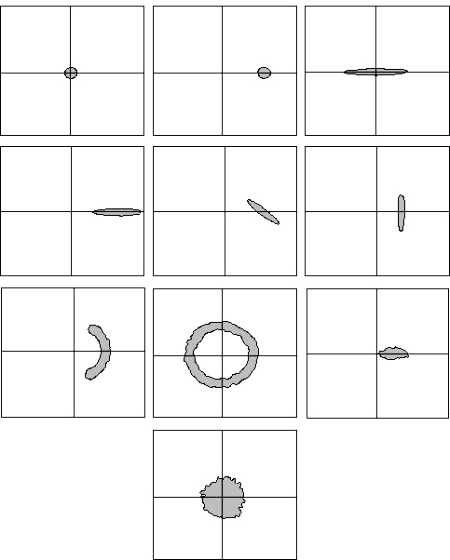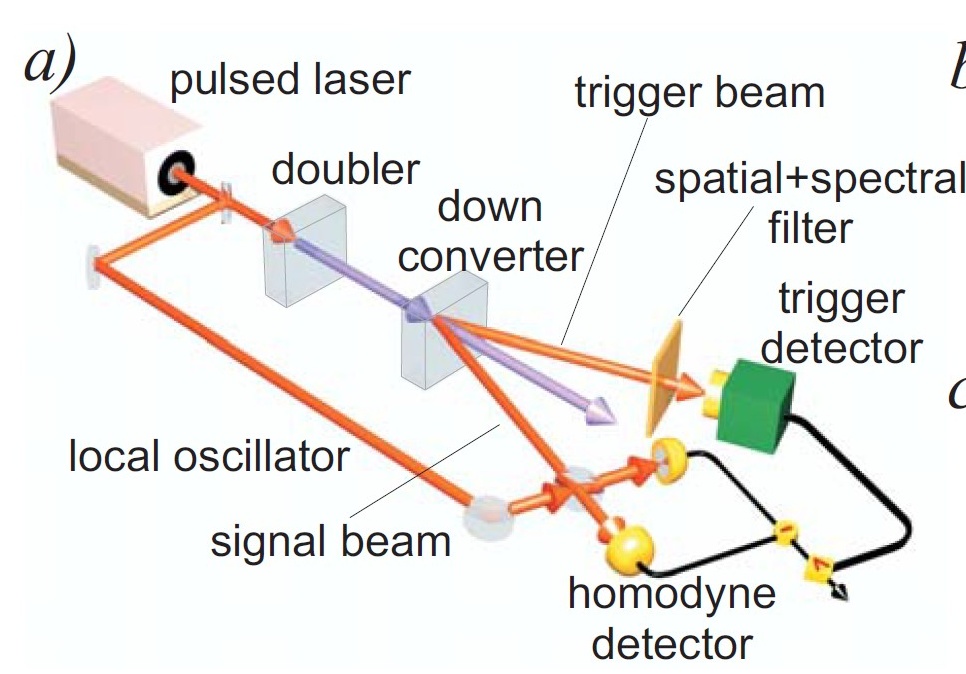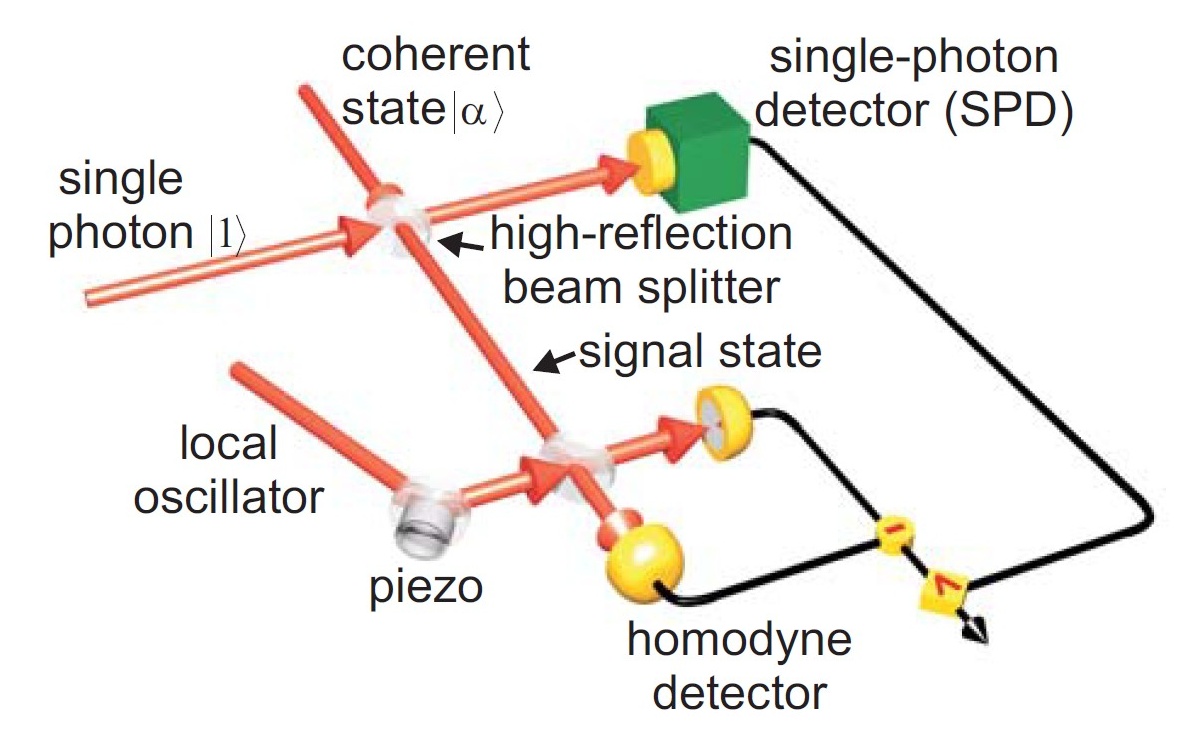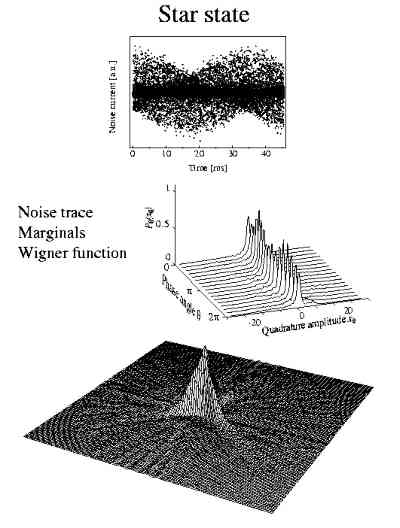
As a summary, all measured states presented in the preceding sections are presented here again, depicted by the contour of their experimentally determined Wigner function in phase space. Shown are a vacuum state, a coherent state, a squeezed vacuum state, three bright squeezed states with different phase angles, two phase-diffused states, an amplitude-diffused state and a thermal state.

![]()
The spectacular one-photon experiments of Alexander Lvovsky et al. (ref. 15) demonstrated outstandingly the power of tomographic detection methods. The Fock state n=1 (one-photon state), as well as the coherent displacement of the one-photon state and its coherent superposition were measured and analyzed. In all three cases parametric downconversion was used, to generate a trigger photon for the homodyne detection scheme (first graph), thus preparing the Fockstate. The coherent displacement then and the superposition were executed with a second beam splitter as shown in the scheme of the experimental setup below (second graph).


![]()
Another example for a state worth a closer examination is the star state, which should evolve during the process of 3-photon downconversion (instead of 2 photons used for the generation of squeezed states shown above). Although frequency tripling is a widely used process, the opposite, splitting one photon of high energy into three has not been observed so far. Perhaps the methods outlined above could provide first insights into this new area of optics. A simulation (T. Felbinger, see ref. 13) of the quantum statistics of the light field yields the following result:

![]()